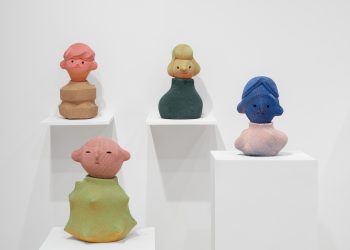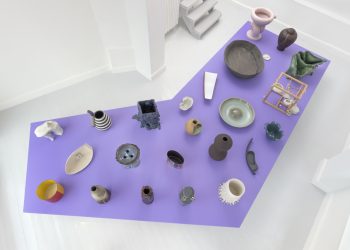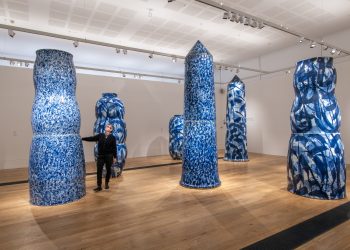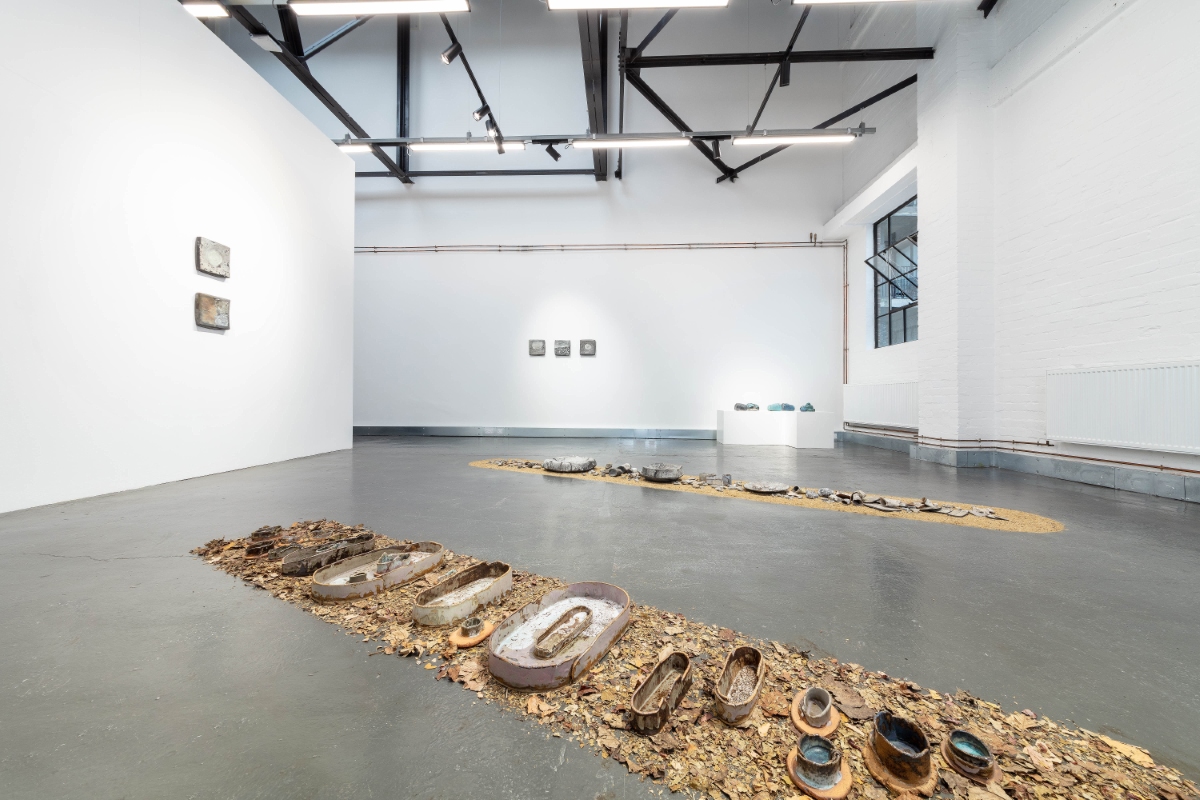
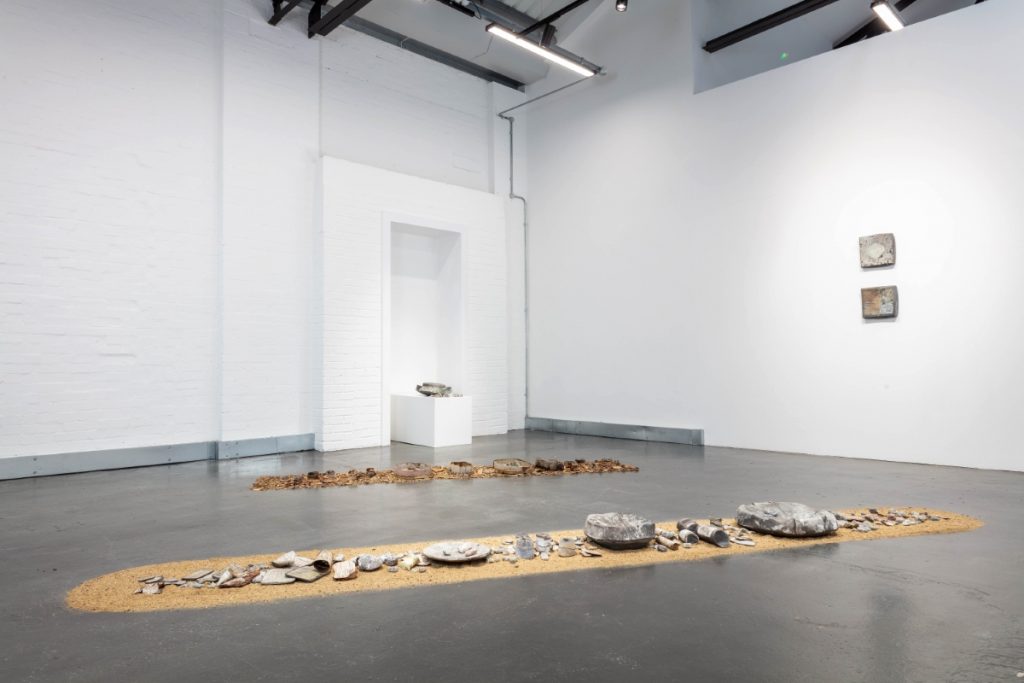
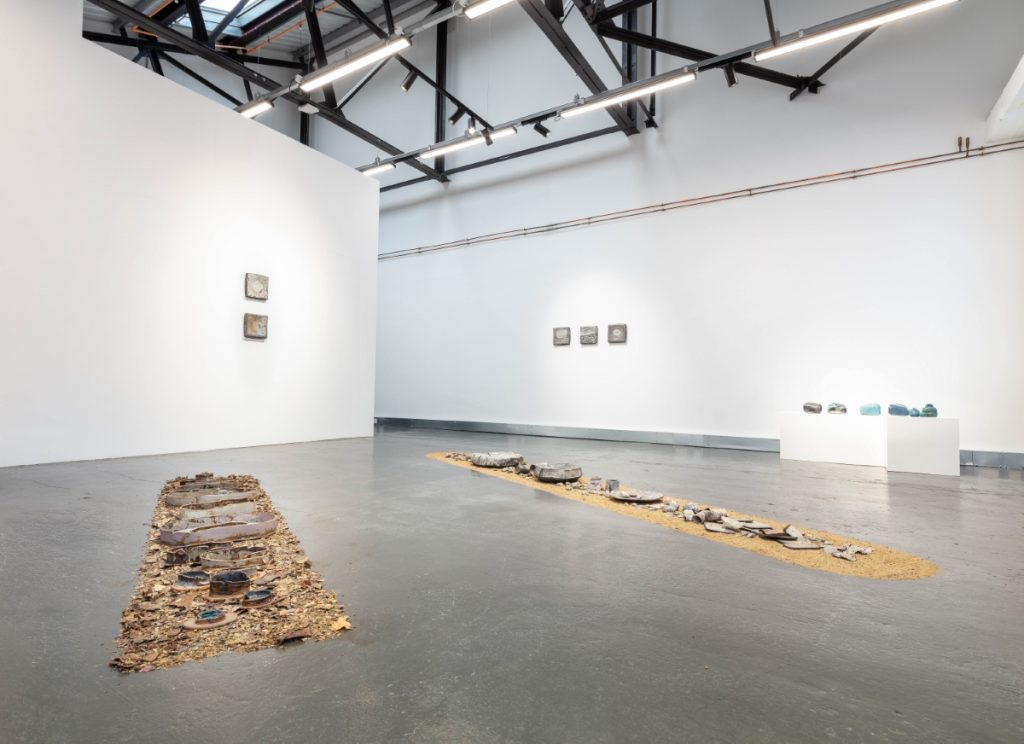
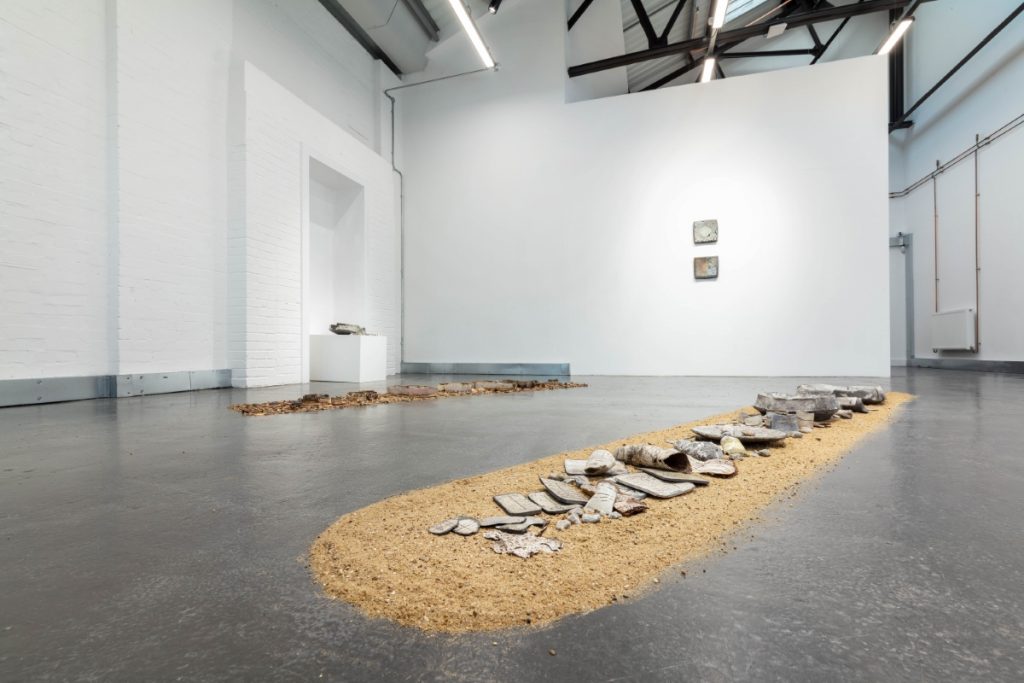
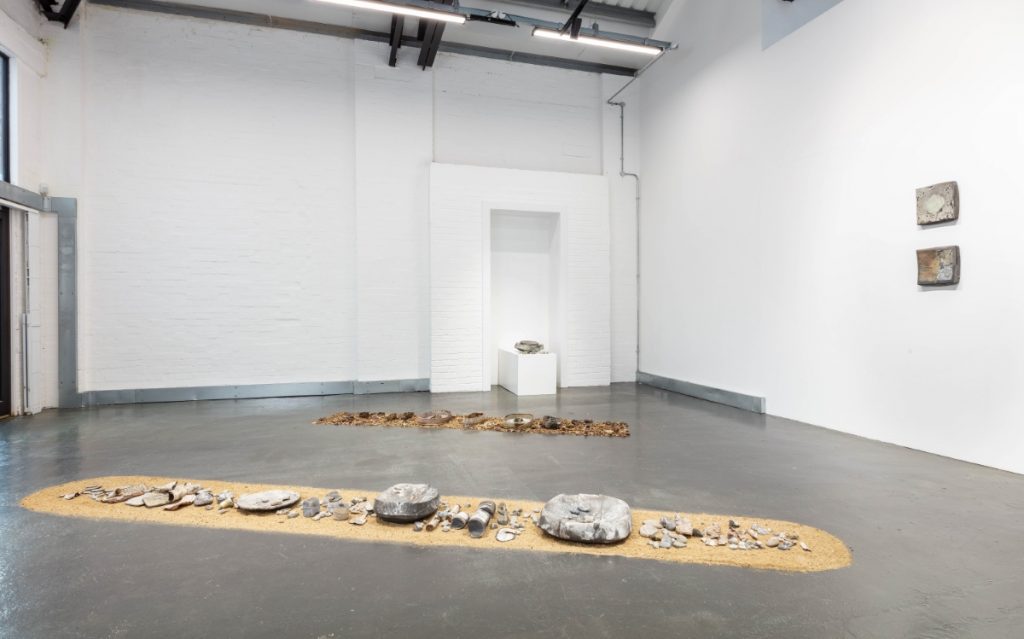
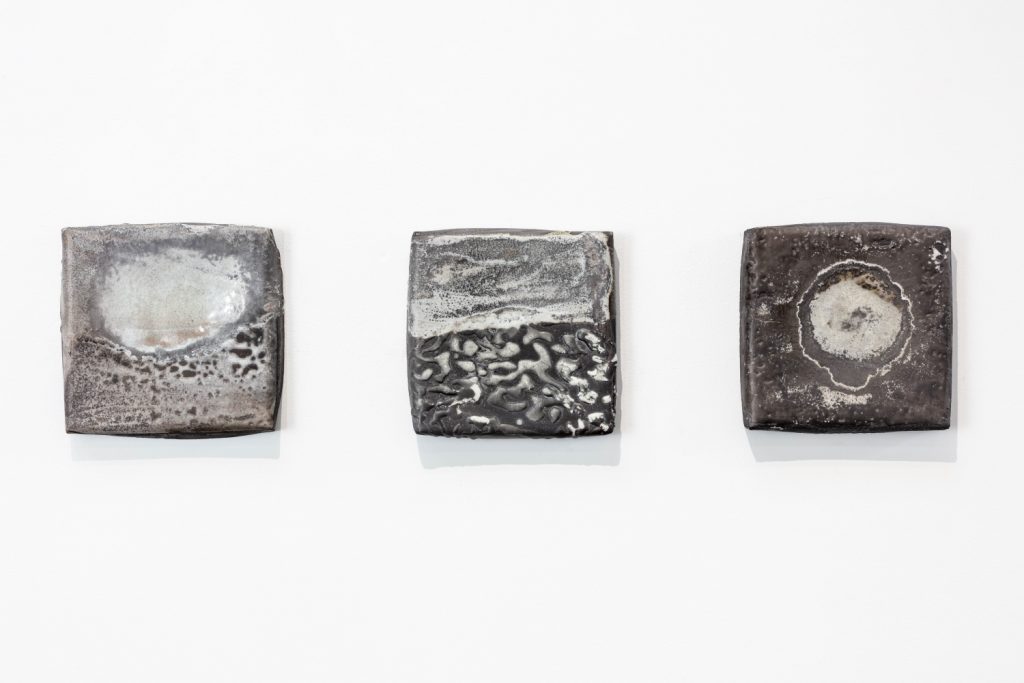
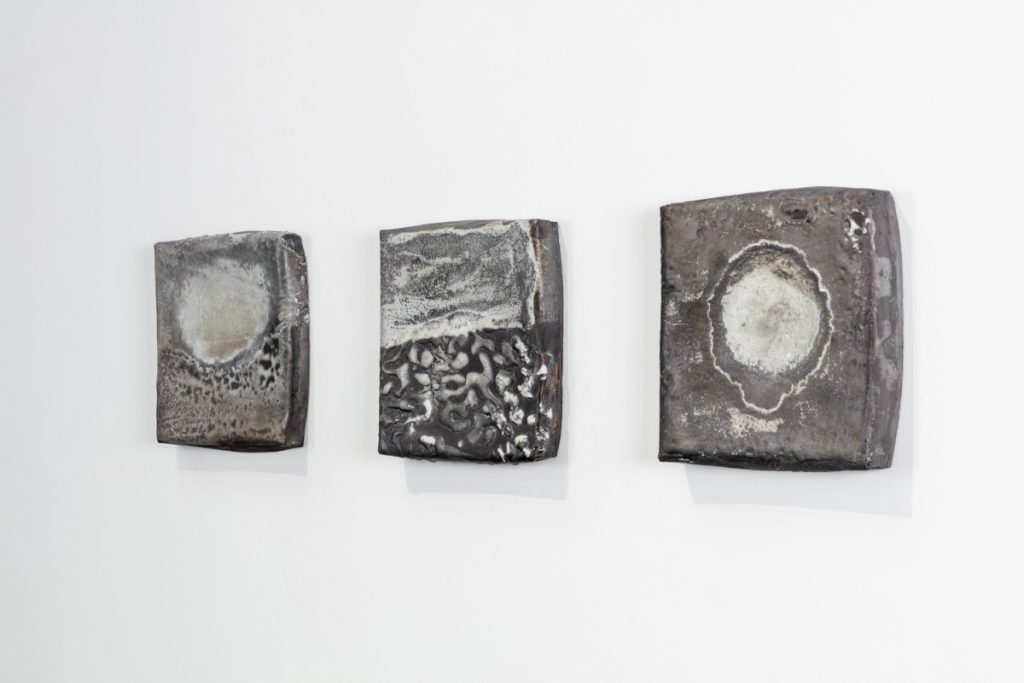
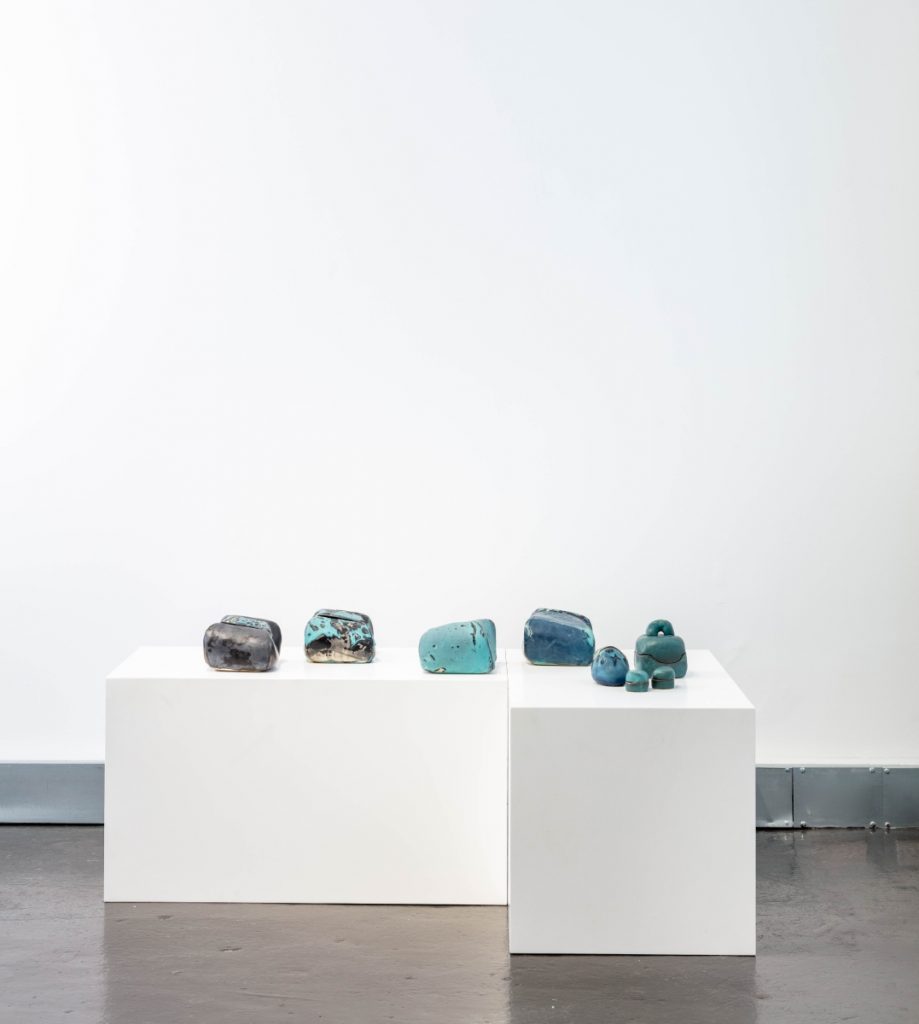
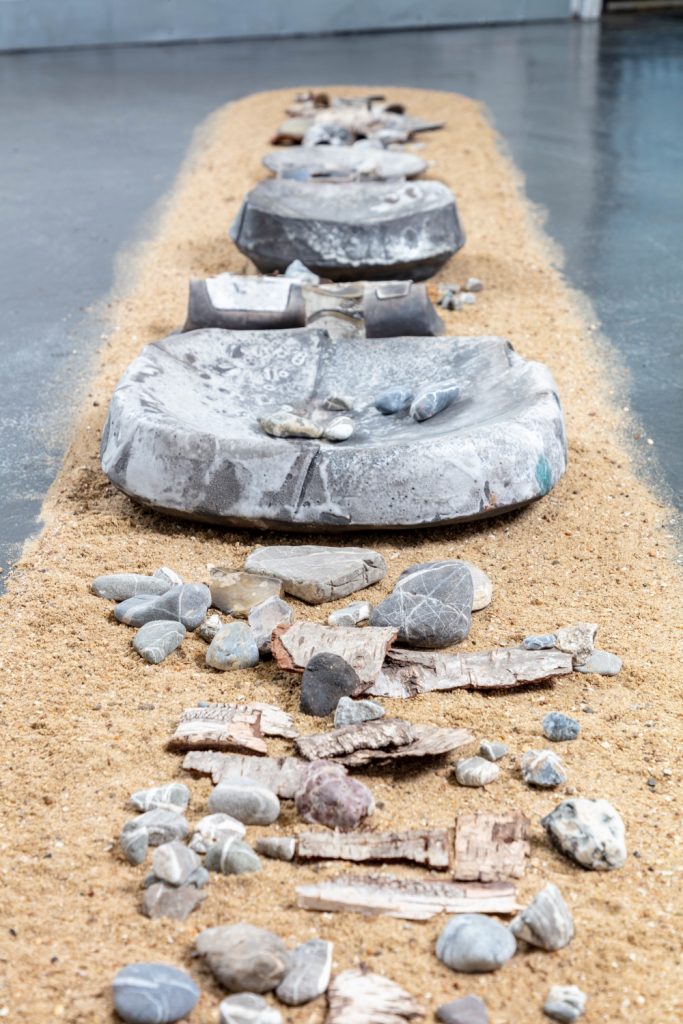
Marta Jakobovits: Look and See is on view at Elizabeth Xi Bauer Gallery, London
October 21 – November 30, 2022
Article by Maria do Carmo M. P. de Pontes
Ikigai is a Japanese term often translated to English as ‘a sense of purpose’ or ’a reason for being’. Like many other Japanese expressions – such as Wabi Sabi, that is, ‘the art of embracing transience and imperfection’ – the idea has been widely spread outside that country in recent years, as a path towards a more fulfilled lifestyle. The four core components of this philosophy are: what you love, what you’re good at, what the world needs, and what you can be paid for. Combine these elements and you’ll find your Ikigai, no matter what profession you pursue.
Ceramics is Marta Jakobovits’ Ikigai. The artist’s mastery of the medium is proportional to the pleasure she gets from doing what she does – and the thrill that we, audience, feel from experiencing the works. Unlike the large majority of contemporary artists, who pride themselves for exploring multiple medias in their practices, Jakobovits has dedicated a lifetime to unveiling the secrets of clay. Such mutual understanding between creature and creator is evidenced in the aesthetics of her ceramics, whether they are a floor or a wall piece, an installation made of several parts or a single object.
Many of Jakobovits’ works are permanently evolving, as each time they are presented, the artist adds elements while removing others. This is the case of Part of the Road Travelled (2002 – ongoing) now in its fourth public exhibition. Its very title implies a sense of continuation: part of the road has been traveled, meaning that part is yet to be explored. The current presentation is made of 33 pieces, eight of which have a cover, so there are in fact 41 elements. These are displayed forming a queue, adorned by stones she has fetched over the years in countries such as Holland, Belgium, Germany, Hungary, Romania, Italy, Denmark and Iran. Jakobovits describes herself as a collector of stones and pebbles, always looking for elements that dialogue with her works; curiously, these natural formations can be seen as readymade ceramics of sorts. By exhibiting manmade and natural forms side by side, she creates a delightful mimicking exercise.
The sense of continuation conveyed in Part of the Road Travelled is central to Jakobovits works. She explains that all her creations are somehow related, by the thinking and the process behind them. The artist finds it hard to let go of her ceramics and enjoys having them around her, as challenges or puzzles that ask to be revisited. Her approach to creation is very intuitive: she listens to the material rather than tells it what to do. For instance, Meditation (2014) is a piece that resembles the miniature of a temple, but whose shape – a squircle base followed by a smaller squircle with an indentation atop – was devised by the artist intuitively. She considers herself a spiritual person, but not within a particular faith, and describes even the smallest phenomena – a bug sourcing their food, the various sounds created by wind – as ‘little miracles’.
This reverence for nature is latent in Collecting the Raindrops (2021). The artist explains that she’s increasingly drawn to simpler forms, and this work epitomises such quest for simplicity. Each of the elements that compose the installation are unique vessel-like forms, and therefore could be used to collect raindrops. As with most of Jakobovits ceramics, the clay is painted subtly rather than dramatically, thus emphasising its very nature. It is as if the painting and glazing processes within her vocabulary are there to give the works a gentle push, to help them find their true self rather than become something else entirely. The exception here is Turquoise Hills (2001–2), a group of eight ceramics of various sizes displaying flashing shades of turquoise. The artist is fascinated by this particular kind of blue and, as a true alchemist, enjoys manipulating the objects to create other shades, closer to lilac or green, for instance. The colours are obtained by firing the works at different temperatures and tempos.
The only work that is displayed on the walls, rather than the floor, is a group of five ceramics from the series Something is About to Happen (2021). These are square-ish plates measuring roughly 27 x 27 cm each featuring unique motifs emerging from their many shades of grey: a circle, a horizontal line and so on. Perhaps because they are hung, they seem to be the most figurative of Jakobovits works, and it’s easy to read them as landscapes. By taking risks and experimenting diligently with shapes, textures and surfaces, Jakobovits exalts the infinite possibilities of ceramics while creating a concise body of work, which continues to expand and metamorphose itself. As she likes to say, ‘I am constantly motivated by the next challenge’.
Contact
contact@lizxib.com
Elizabeth Xi Bauer Gallery
Fuel Tank, 8-12 Creekside
London SE8 3DX
United Kingdom
Photograph: Richard Ivey. Courtesy of the Artist and Elizabeth Xi Bauer Gallery, London.
Photo captions
- Marta Jakobovits, Something is About to Happen, 2021. Stoneware, personal glazes fired at 1280 Celsius and then after firing oil reduction at 1040 Celsius, 27 x 27 x 4.5 cm each (5 works).
- Marta Jakobovits, Turquoise Hills, 2001-2002. A group of 8 double pieces. Faïence, fired at 1060 Celsius. Various dimensions, overall dimensions: 50 x 140 x 90 cm.
- Marta Jakobovits, Part of the Road Travelled (detail), 2022 – ongoing. 33 pieces of stoneware, personal glazes, firing at 1280 Celsius, reduction after firing at 1040 Celsius, sand, bark, stones. Various dimensions, overall dimensions: 13 x 422 x 60 cm.



